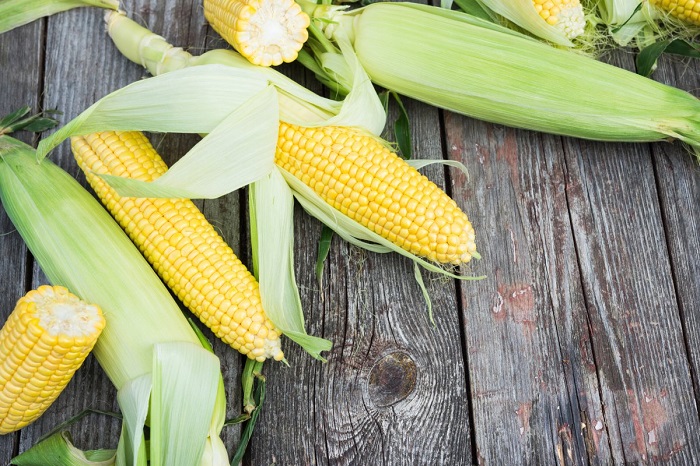
Corn is one of the most widely eaten foods in the world. It’s also incredibly versatile. You’ll find it in baked goods and breads, popped as a snack, grilled on the cob, fed to cows, used to fuel cars, and as the base ingredient for a huge range of processed foods and additives. But is corn good for you? And how do you choose the healthiest corn to eat?
Corn makes me think of summer weather, backyard barbecues, and time spent with loved ones. I’ve enjoyed corn on the cob alongside other delicious food on many summer nights. I’ve also enjoyed my fair share of cornbread, corn tortillas, and more corn chips than I’d care to admit. And I know I’m not the only one.
What Is Corn?
Corn is a domesticated crop that is thought to have originated from a Mexican grass called teosinte — corn’s closest relative — over 8,700 years ago. Christopher Columbus introduced corn to Europe around the late 1400s. From there, the rest of the world came to know it by way of travelers and traders.
Traditionally, the British English use of the word “CORN” referred to any form of grain. Many other countries around the world call it “MAIZE”. But as an American, to avoid confusion, in this article I’m going to call corn “corn”, not maize.
And now we come to one of the biggest corn questions of them all: Is corn a grain? Or a vegetable?
Apparently, that’s a bit of a gray area. Most people consider corn on the cob a vegetable. But when it comes to the individual kernels, those are whole grains. Kernels are also seeds (you can plant them to grow popcorn!), so technically that could even make corn a fruit.
Corn Varieties and Health Benefits:
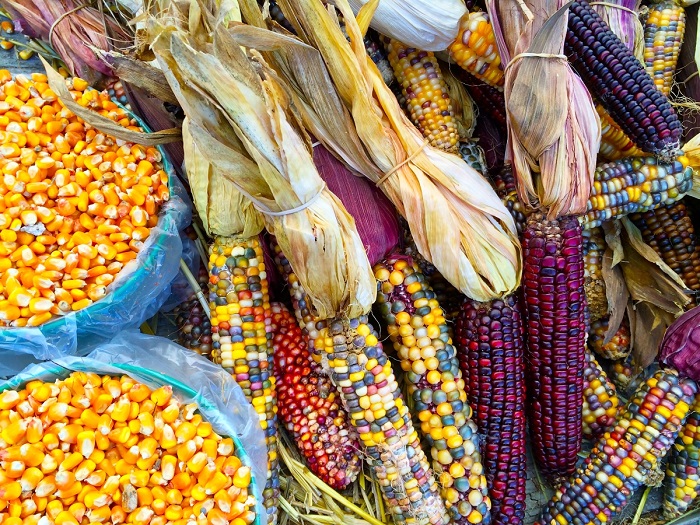
There are many different varieties of corn. Here are some of the most common ones.
1 – Sweet Corn
This is the yellow variety you’re most likely to find on the cob or cut off the cob and frozen at the grocery store or local market. It’s known for its sweet taste, which is due to its high sugar content. Sweet corn is different from other varieties because it’s actually picked for human consumption before it’s fully mature. This assures that the kernels stay soft. When cooked, it produces ferulic acid. (Ferulic acid is an antioxidant that has been studied by researchers at Cornell University for its potential anticancer characteristics.) Interestingly, even though sweet corn is the variety most consumed by humans, it only makes up 1% of the corn grown in the United States. Sweet corn is actually said to have come about from a natural mutation sometime in the 18th century.
2 – Blue Corn
This variety is full of anthocyanins, which accounts for its bluish kernels. Anthocyanins are pigments that are high in antioxidants. Anthocyanins in blue corn have specifically been studied for their anticancer properties and demonstrated an antiproliferative effect on certain cancer cell lines. Blue corn is also slightly higher in plant-based protein than yellow. Although you may not commonly encounter blue corn in its whole form, food companies use it to make blue corn tortillas, tortilla chips, and blue cornmeal.
3 – Indian Corn
Often seen in the autumn, Indian corn is a beautiful variety with multicolored kernels. They can take shape in a range of colors, such as red, blue, and white. The unique coloring comes from cross-pollination of single-color corn species. It’s also called flint corn and is one of the oldest varieties, originating with the Native Americans who taught early European immigrant explorers how to grow it. Indian corn has hard kernel shells that shrink when cooked, but this makes it less susceptible to spoiling than other varieties. When not used as table decor, this variety works best in dishes like polenta and hominy because it doesn’t taste sweet. Higher in starch than other varieties, it contains varying degrees of the carotenoids Lutein and Zeaxanthin, though these appear to be reduced when boiled.
4 – Field Corn
Most of the corn grown in the United States is field corn. And most of it is “GMO” genetically engineered, at the time this article was written over 90% is of the “GMO” variety. Its primary use is to feed livestock, or to produce ethanol for cars. Some is also used to make corn starch, corn oil, corn cereal, and corn syrup for human consumption. Field corn is sometimes referred to as “cow corn,” because so much of it is fed to livestock. It’s also called dent corn because of a distinct dent that forms when the kernels dry.
5 – Baby Corn
You might find baby corn at a salad bar or pickled in tiny jars at the grocery store. Many people assume that baby corn comes from a smaller species of corn. Surprise! It’s just sweet or field corn picked very prematurely.
In addition to health-promoting antioxidants, edible corn offers some other benefits, too:
- Corn has many nutrients. It’s a good source of fiber, protein, B vitamins, and minerals like zinc, copper, manganese, magnesium, iron, selenium, and phosphorus. Whether you want to eat corn fresh, canned, frozen, or ground into cornmeal, you can reap these nutritional benefits year round.
- Corn may help keep your eyes healthy. Corn is high in Lutein and Zeaxanthin, which are carotenoid compounds naturally found in the macula of your eyes. Lutein and Zeaxanthin in foods have been studied for their impact on preventing age-related macular degeneration (AMD). A study in JAMA found that of 365 adult men and women, those who consumed the highest amounts of these compounds had a 43% reduced risk of AMD compared to those who ate the lowest amounts.
-
- To Order this Product – Miracle Zeaxanthin: Advanced Eye Support Formula
(This product contains both Lutein and Zeaxanthin and offers Great Protection for the your Eyes)
- To Order this Product – Miracle Zeaxanthin: Advanced Eye Support Formula
- Corn may be good for your gut. The high fiber content of corn may also be good for your gut. Fiber is essential for digestive health. It’s been shown to reduce the risk for digestive diseases like colorectal cancer and diverticulitis. The fact that corn could be helpful with diverticulitis is particularly striking, considering that people with diverticulitis have traditionally been told to avoid eating popcorn. But a 2008 study published in JAMA followed over 47,000 men between the ages of 40 and 75, with no history of diverticulitis, for 18 years. Researchers found that men who ate popcorn at least two times per week had a significantly lower risk of developing diverticulitis than men who ate no popcorn. As a result of this and other studies, official recommendations are now being updated.
- Corn has long been a part of traditionally healthy diets. Corn has been a staple food for Native Americans and an important source of nutrients for many nations throughout history. And numerous researchers suggest that switching back to more traditional foods like corn could significantly reduce the chronic diseases of modern society. A 2007 report on indigenous people in North America published in the Journal of Medicinal Food discusses this in more depth. Switching to a modern diet that’s high in sugar, processed food, and factory farmed animal products leads to far more health risks for these communities than their traditional diets based on rice, vegetables, legumes, corn, and wild game. Not surprisingly, eating the Western diet increases their risk of high blood pressure and diabetes dramatically.
What About Popcorn?

Popcorn is a whole grain with many nutrients, including a significant amount of fiber and Polyphenols. Although there are many delicious ways to prepare this popular snack, the mode of preparation is key. That’s where you can transform a healthy snack into an unhealthy one.
For instance, many microwave popcorn bags contain perfluorooctanoic acid (PFOA), which has been linked to Thyroid problems and ADHD. Many packaged brands also contain hydrogenated or partially-hydrogenated oils, which can contain trans fats that are harmful to your heart health. And if it has fake butter in it? This often contains a chemical called diacetyl, which has been linked, in an occupational exposure study involving a microwave popcorn production facility, to a respiratory disease called cryptogenic organizing pneumonia. Yikes.
It’s best to enjoy air-popped popcorn, which enables you to avoid the oil used in the processing of most commercially available popcorn. And instead of mounds of melted butter and salt, try popcorn with healthier toppings. Perhaps nutritional yeast, lemon juice, herbal seasoning, turmeric, curry powder, garlic powder, onion powder, a dash of sea salt, and/or other herbs and spices. Some people even try cinnamon. The possibilities are endless!
Corn, Pesticides, and GMO’s:
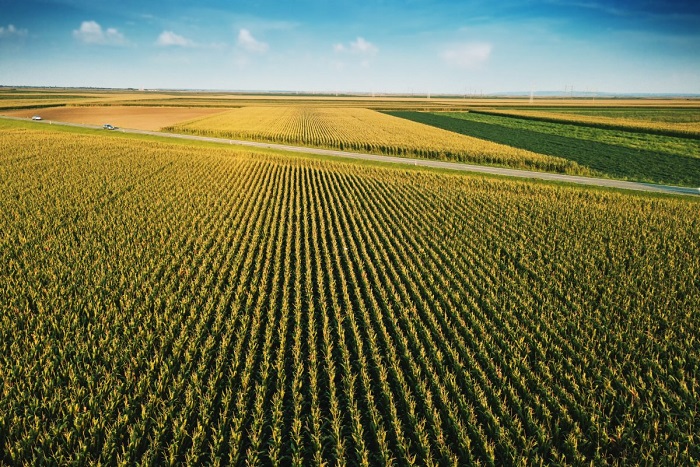
Largely as a result of being grown in enormous monocultures with little to no rotation of crops, corn is highly susceptible to pests. As such, farmers often spray it with pesticides and herbicides, most of which the thick corn husk prevents from infiltrating the edible part. But that doesn’t stop these chemicals from being incredibly harmful to the environment and to species, like bees, that come in contact with these poisons.
Genetic modification is another strategy agribusiness employs in its war against the pests that pose a particular threat to monocultures. As of 2016, approximately 92% of corn grown in the United States was genetically modified. One goal of genetic modification of corn is to make corn resistant to herbicides (like Monsanto’s RoundUp, or glyphosate). Most GMO corn can produce a protein naturally made by Bacillus thuringiensis (Bt) bacteria, which kills pests like the southwestern corn borer that can threaten crops. When the corn borer eats this kind of GMO corn, the bug’s intestines explode, causing rapid death.
Historically, farmers would spray “Bt” on the outside of plants and you could even wash it off. But with GMO crops, you can find it in literally every cell of the plant. Humans are eating it in utterly unprecedented quantities, and with GMO crops the pesticide is “built in.”
And there’s more bad news. “Bt” corn worked to repel pests for a while, but now the pests appear to be building resistance to this toxin. How do farmers protect the crops when that starts to happen? By spraying with more pesticides, of course.
The good news is that there is no GMO popcorn. And the majority of sweet corn (the kind people eat the most frequently) is not genetically modified. The sweet variety is on the Environmental Working Group’s 2019 Clean Fifteen list of crops that contain the least pesticide residues. However, Monsanto (now owned by Bayer) isn’t standing idly by when they can make money. Now, you can find genetically engineered sweet corn in stores.
If you want to avoid GMO corn, there are a couple of actions you can take. First, you can ask your local farmers if they’re planting GMO seeds. This is, of course, easiest to do if you’re buying directly from them at a local farmers’ market. You can also look for USDA Organic corn, or for Non-GMO Project certified. Neither of these certifications allows for the use of GMO crops.
Environmental Concerns with Corn:
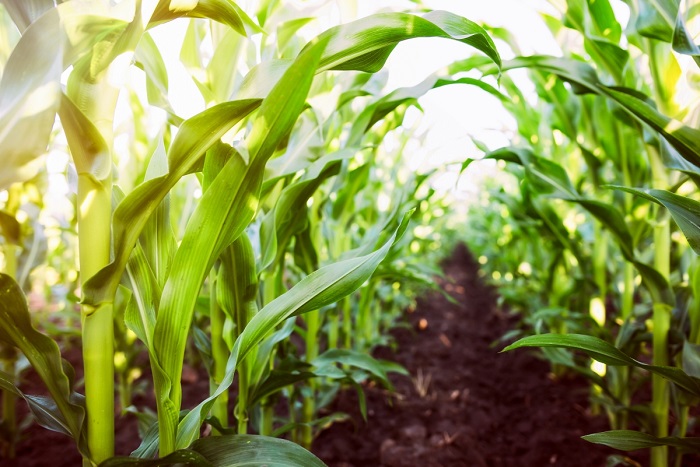
Over half of the grain grown on the planet, and a strong majority of the corn, is being fed to livestock, not humans. And it takes between 8- 12 pounds of corn to produce one pound of feedlot beef. This is not exactly the peak of efficiency. In fact, modern meat production is something of a protein factory in reverse…
And feed corn (almost all of which is field corn) uses an immense amount of natural resources. In fact, it uses more water for irrigation and requires more fertilizer to grow than any other crop. Fertilizer is rich in nitrogen and phosphate, which are linked to the development of ocean dead zones, as agricultural runoff reaches our waterways. Corn production is responsible for approximately 40% of the nitrogen pollution in agricultural runoff. In the United States, corn also uses more land than any other crop – about 97 million acres.
Meanwhile, there are nearly one billion people hungry or starving around the world. If we stopped cycling so much corn and other crops through livestock, we’d free up vast amounts of land and water, which we could use to grow food directly for humans.
The counter-intuitive reality is that a typical factory farmed steak contains significantly more corn and soy than a dinner of corn on the cob and tofu.
Corn For Humans – How To Enjoy It:
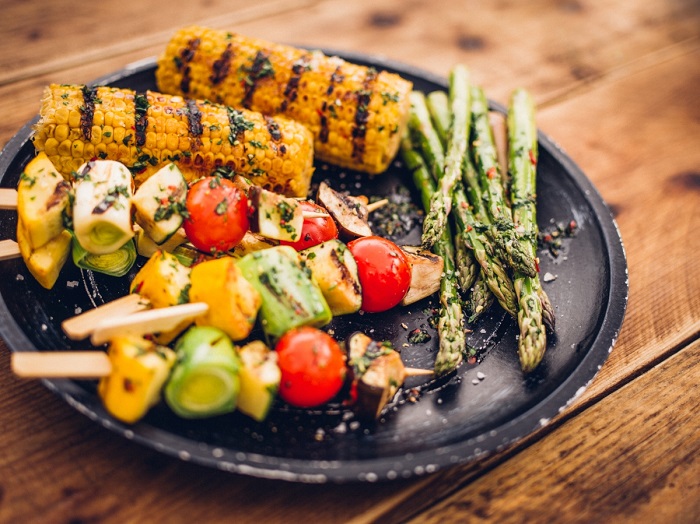
When choosing corn on the cob, look for uniformly green and tightly wrapped ears. The cob itself should feel firm all the way around. If you notice that the brown silk peeking out of the top is slightly damp, that’s a good thing. However, if the husk has any holes in it, choose another one — this could indicate worms.
When you get home, tightly wrap the ears in a plastic bag (or other more eco-friendly wrap) and place them in the refrigerator. Corn usually stays fresh for a few days stored this way. You can also freeze it. To do this, you might want to blanch the corn — either in whole form or just the kernels — and then freeze it. This will help maintain its color, texture, and freshness.
If you buy corn in its husk, you’ll have to shuck it, or remove the leaves. Start by peeling back the outer leaves, then the inner leaves. When you have all of the leaves and most of the silks peeled back, break them off the end of the cob. You will probably have some pesky silk left.
Watch the video below on how to easily remove the silk that is left after shucking:
Here are some a-maize-ing recipes to try:
Easy Vegan Cornbread by From My Bowl – This is an oil-free, gluten-free, low-sugar recipe that uses white beans to give it a soft texture.
Stovetop Air Popped Popcorn by Amy’s Healthy Baking – This is a simple tutorial for making air-popped popcorn right on your stove. You can omit the salt if you like, or try some other healthy toppings like lemon juice or curry powder. You can also buy a popcorn popper that makes 18 cups of popcorn in 2 ½ minutes — like this one, here.
Cowboy Caviar by Cookie and Kate – This is a delicious dip made with corn, beans, tomatoes, bell peppers, and fresh herbs. Serve it alongside fresh cut veggies or pitas.
Mexican Corn on the Cob by Ceara’s Kitchen – The avocado and lime dressing make this a zesty and fun twist on classic corn on the cob.
Kernels of Truth:
If you’re allergic to corn, as some people are, then, of course, it goes without saying (but I’ll say it anyway): Don’t eat it. For most people, however, the unprocessed, non-GMO variety is a nutritious food that can be a healthy addition to your diet. You can experiment with different ways to enjoy corn — knowing you’re enjoying a long-standing and nourishing staple food that’s tasty and has some intriguing health benefits.
Tell Us in the Comments:
- Do you eat corn?
- What’s your favorite way to eat it?
- Do you have any great corn recipes to share?